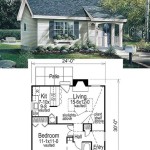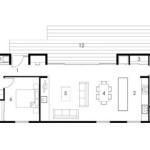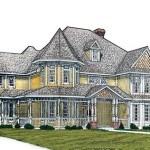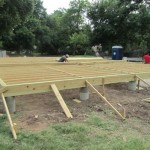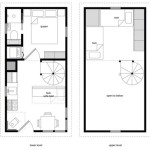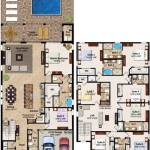A Container House Plan refers to a detailed blueprint for constructing a residential structure using recycled shipping containers. These plans provide comprehensive instructions for the repurposing and modification of containers into habitable spaces. For instance, a Container House Plan could outline the steps for converting a standard 20-foot shipping container into a compact, eco-friendly dwelling.
Creating a Container House Plan involves meticulous planning and consideration of various factors. Architects and designers must carefully assess the intended use, site conditions, and budget to determine the optimal design and layout for the container home. Factors such as insulation, ventilation, electrical wiring, and plumbing must be carefully addressed to ensure comfort and functionality.
Let’s delve deeper into the essential elements and considerations involved in creating a comprehensive Container House Plan…
When creating a Container House Plan, several important points should be considered to ensure a successful outcome:
- Site Assessment
- Foundation Design
- Container Modifications
- Insulation and Ventilation
- Electrical and Plumbing
- Interior Layout
- Exterior Finishes
- Building Codes and Permits
By carefully addressing these key elements, architects and designers can create Container House Plans that result in sturdy, comfortable, and sustainable living spaces.
Site Assessment
Conducting a thorough site assessment is a critical step in creating a successful Container House Plan. This involves carefully evaluating the site’s characteristics and conditions to ensure the suitability and feasibility of constructing a container home.
- Soil Conditions
The soil’s bearing capacity and drainage properties must be assessed to determine its suitability for supporting the weight of the container home. Soil testing may be necessary to identify any potential issues that could affect the foundation’s stability.
- Slope and Topography
The site’s slope and topography can impact the design and construction of the container home. Leveling the site may be necessary, and retaining walls or other measures may be required to address slope stability.
- Access and Infrastructure
Ensuring adequate access to the site for construction vehicles and materials is essential. Additionally, the availability of utilities such as water, electricity, and sewage must be considered.
- Environmental Factors
Factors such as sun exposure, wind patterns, and noise levels should be taken into account to optimize the placement and orientation of the container home for comfort and energy efficiency.
A comprehensive site assessment helps architects and designers make informed decisions about the design and layout of the container home, ensuring it is well-suited to the specific site conditions.
Foundation Design
The foundation of a container home plays a vital role in ensuring its stability and longevity. Several factors must be considered when designing the foundation for a container house plan:
Soil Conditions
The soil’s bearing capacity and drainage properties must be carefully assessed to determine the most suitable foundation type. For stable and well-drained soils, a simple pad foundation or concrete slab may suffice. However, if the soil is weak or has poor drainage, deeper foundations such as piers or piles may be necessary to provide adequate support.
Container Weight and Distribution
The weight of the container home and its distribution must be taken into account when designing the foundation. Shipping containers are heavy steel structures, and their weight must be evenly distributed across the foundation to prevent settling or structural damage.
Seismic Activity
In areas prone to seismic activity, the foundation must be designed to withstand earthquake forces. This may involve using reinforced concrete foundations, shear walls, or other seismic-resistant measures.
Frost Depth
In regions with cold climates, the foundation must be designed to extend below the frost depth to prevent frost heave, which can cause the foundation to move and damage the structure.
Foundation Types
Various types of foundations can be used for container homes, including:
- Concrete Slab: A concrete slab is a simple and cost-effective foundation option for stable soils. It involves pouring a reinforced concrete slab directly on the ground.
- Pad Foundation: A pad foundation consists of individual concrete pads placed under the corners and key support points of the container home. It is suitable for soils with moderate bearing capacity.
- Piers: Piers are deep foundations that extend below the frost depth and are used to support structures on weak or unstable soils.
- Piles: Piles are driven deep into the ground and are used to support structures in areas with very weak soils or high water tables.
The choice of foundation type depends on the specific site conditions and the design requirements of the container house plan.
Container Modifications
Modifying shipping containers to transform them into habitable spaces is a crucial aspect of creating a Container House Plan. These modifications involve altering the structural elements, cutting openings for windows and doors, and installing necessary amenities to make the container suitable for residential use.
Structural Reinforcement
Shipping containers are designed for cargo transportation and may require structural reinforcement to withstand the demands of a residential building. This may involve adding steel beams or frames to strengthen the container’s structure, especially if multiple containers are being combined to create a larger living space.
Openings for Windows and Doors
Cutting openings for windows and doors is essential to create natural light, ventilation, and access to the container home. The placement and size of these openings should be carefully planned to maximize natural light and airflow while maintaining the structural integrity of the container.
Insulation and Interior Finishes
Insulation is crucial for maintaining a comfortable indoor temperature in a container home. Various insulation materials, such as spray foam, fiberglass, or cellulose, can be used to line the interior walls and roof of the container to minimize heat loss and gain. Interior finishes, such as drywall, paneling, or paint, can then be installed to create a more aesthetically pleasing and habitable space.
Electrical and Plumbing Installations
Electrical and plumbing systems are essential for the functionality and comfort of a container home. Electrical wiring, lighting, outlets, and appliances must be installed according to electrical codes and safety standards. Similarly, plumbing pipes, fixtures, and water heaters must be properly installed to ensure a reliable water supply and waste disposal.
Insulation and Ventilation
Insulation and ventilation play crucial roles in creating a comfortable and healthy living environment in a container home. Proper insulation helps regulate indoor temperatures, reducing heat loss in cold climates and preventing overheating in warm climates. Adequate ventilation ensures a constant supply of fresh air, removes moisture, and prevents the buildup of harmful pollutants.
Insulation
- Types of Insulation: Various insulation materials can be used in container homes, including spray foam, fiberglass, cellulose, and mineral wool. Each type has its own advantages and disadvantages in terms of cost, thermal performance, and environmental impact.
- Insulating the Walls and Roof: The walls and roof of the container are typically insulated to minimize heat transfer. Insulation can be installed between the container’s inner and outer walls, as well as on the underside of the roof.
- Vapor Barrier: A vapor barrier is installed on the warm side of the insulation to prevent moisture from entering the container and causing condensation and mold growth.
- Thermal Bridging: Thermal bridging occurs when heat is transferred through uninsulated metal elements of the container, such as the frame and supports. It is important to minimize thermal bridging by using thermal breaks or insulated spacers.
Ventilation
Proper ventilation is essential to maintain good indoor air quality and prevent moisture buildup. Several ventilation strategies can be employed in container homes:
- Natural Ventilation: Natural ventilation relies on openings in the container, such as windows, doors, and vents, to allow air to circulate naturally. Cross-ventilation, where air flows through the container from one side to the other, is particularly effective.
- Mechanical Ventilation: Mechanical ventilation systems use fans or blowers to circulate air throughout the container. This can be necessary to supplement natural ventilation or provide ventilation in areas where natural ventilation is limited.
- Exhaust Fans: Exhaust fans are installed in areas that generate moisture, such as bathrooms and kitchens, to remove excess humidity and prevent condensation.
- Air Exchangers: Air exchangers are mechanical ventilation systems that continuously exchange indoor air with fresh outdoor air, ensuring a constant supply of fresh air and removing stale air.
Electrical and Plumbing
Electrical and plumbing systems are essential components of a container house plan, ensuring the functionality and comfort of the living space. Careful planning and execution of these systems are crucial to create a safe, efficient, and habitable environment.
- Electrical Wiring and Lighting:
The electrical system in a container house plan includes wiring, lighting, outlets, and appliances. All electrical work should adhere to local building codes and electrical safety standards. Proper wiring and grounding are essential to prevent electrical hazards, ensure efficient operation of appliances, and provide adequate lighting throughout the container home.
- Plumbing Fixtures and Piping:
The plumbing system in a container house plan involves the installation of pipes, fixtures, and appliances for water supply and drainage. Careful planning is necessary to determine the optimal placement of sinks, toilets, showers, and other fixtures. Water pipes should be properly sized and connected to ensure adequate water pressure and flow throughout the container home. Drainage pipes must be properly sloped and connected to a septic tank or municipal sewer system.
- Water Heating and Appliances:
Water heating systems, such as electric water heaters or tankless water heaters, are essential for providing hot water in a container home. The choice of water heater depends on the size of the container home and hot water demand. Additionally, various energy-efficient appliances, such as low-flow faucets and toilets, can be incorporated into the container house plan to reduce water consumption and utility costs.
- Ventilation and Exhaust Systems:
Proper ventilation is crucial in a container home to prevent moisture buildup, ensure air quality, and remove cooking odors. Ventilation systems, such as exhaust fans or range hoods, should be installed in areas like bathrooms, kitchens, and laundry rooms to exhaust stale air and introduce fresh air. Mechanical ventilation systems may be necessary in some cases to supplement natural ventilation.
By carefully considering and planning the electrical and plumbing systems, architects and designers can create container house plans that provide a comfortable, functional, and safe living environment.
Interior Layout
The interior layout of a container house plan is crucial in creating a functional and comfortable living space. Careful consideration should be given to the arrangement of rooms, flow of traffic, and utilization of space to maximize the potential of the container’s unique structure.
- Open Floor Plans:
Open floor plans are a popular choice for container homes, as they create a sense of spaciousness and allow for flexible use of space. By minimizing interior walls and partitions, open floor plans encourage natural light flow and foster a sense of connectivity between different areas of the container home.
- Multi-Level Designs:
Multi-level designs can introduce verticality and spatial interest into a container house plan. Creating lofts or mezzanine levels can provide additional sleeping or living areas while maximizing the use of the container’s height. Staircases or ladders can be incorporated to connect different levels, adding a touch of industrial charm to the interior.
- Flexible Spaces:
Flexible spaces offer versatility and adaptability in container house plans. Multi-purpose rooms that can transform from a living area to a guest room or a home office allow for efficient use of space and cater to changing needs. Movable partitions or screens can further enhance the flexibility of the interior layout.
- Maximizing Natural Light:
Natural light plays a vital role in creating a welcoming and healthy living environment. Container house plans should prioritize the incorporation of large windows and skylights to maximize natural light penetration. Strategic placement of windows can also frame scenic views and connect the interior to the surrounding outdoor spaces.
By carefully considering these key aspects of interior layout, architects and designers can create container house plans that are both functional and aesthetically pleasing, providing comfortable and inviting living spaces.
Exterior Finishes
Exterior finishes play a crucial role in the overall appearance, durability, and thermal performance of a container house plan. Careful selection and application of exterior finishes can enhance the aesthetic appeal of the container home while protecting it from the elements and improving its energy efficiency.
Cladding Options:
Cladding materials provide a protective layer over the exterior walls of the container and can significantly alter the look of the house. Popular cladding options for container homes include corrugated metal, wood siding, fiber cement panels, and composite materials. Each material offers unique aesthetic qualities, durability, and maintenance requirements.
Roofing Systems:
The choice of roofing system is essential for protecting the container home from rain, snow, and other weather conditions. Metal roofing is a common option for container homes due to its durability, low maintenance, and energy efficiency. Other roofing options include asphalt shingles, tile roofing, and green roofs, which can provide additional insulation and environmental benefits.
Insulation and Weatherproofing:
Proper insulation and weatherproofing measures are crucial for maintaining a comfortable indoor temperature and reducing energy consumption in a container home. Additional insulation can be added to the exterior walls and roof to minimize heat loss and gain. Weatherproofing measures, such as caulking and weatherstripping around windows and doors, help prevent air and moisture infiltration.
Paint and Finishes:
Exterior paint or finishes can enhance the aesthetic appeal of the container home and provide additional protection against the elements. Choosing high-quality paints and finishes specifically designed for metal surfaces is essential to ensure durability and longevity. A variety of colors and finishes are available to match the desired style and complement the surrounding environment.
By carefully considering these exterior finishes, architects and designers can create container house plans that are not only visually appealing but also durable, energy-efficient, and well-suited to the local climate and building codes.
Building Codes and Permits
Building codes and permits are essential considerations when creating a Container House Plan. Adhering to local building regulations ensures the safety and structural integrity of the container home, while obtaining the necessary permits ensures compliance with legal requirements.
Building Codes:
Building codes establish minimum standards for the design, construction, and alteration of buildings to ensure public safety and well-being. These codes address various aspects of construction, including structural stability, fire safety, energy efficiency, and accessibility. Container homes must comply with the applicable building codes in the jurisdiction where they are located. This may involve meeting specific requirements for foundation design, wind resistance, insulation, and electrical and plumbing systems.
Permits:
Building permits are required before starting construction on a container home. The permit application process typically involves submitting detailed plans and specifications to the local building department for review and approval. The building department will assess the plans to ensure compliance with building codes and zoning regulations. Once approved, the permit authorizes the construction of the container home.
Inspections:
During construction, the building department may conduct inspections to verify that the work is being done according to the approved plans and meets the building codes. These inspections typically occur at key stages of construction, such as foundation completion, framing, and final inspection before occupancy.
Certificate of Occupancy:
Once construction is complete and all inspections have been passed, the building department will issue a Certificate of Occupancy. This certificate verifies that the container home is safe and habitable and meets all applicable building codes. Obtaining a Certificate of Occupancy is necessary before the container home can be legally occupied.










Related Posts

